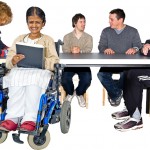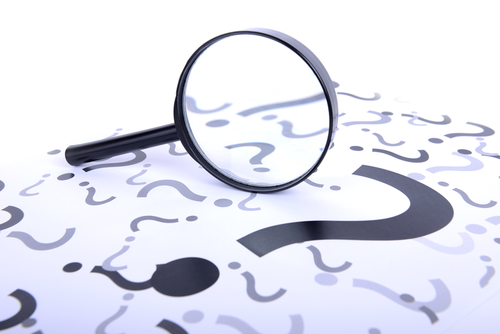
The publication of Valuing People Now in 2009 signalled a renewed focus on delivery of the key objectives of the 2001 White Paper. To reinforce this focus, the Government introduced two self-assessment frameworks for health and local authorities to complete. We have posted previously about the progress of partnership boards using this framework
Method
The new Joint Health and Social Care Learning Disability Self-Assessment Framework (JHSCSAF) replaces these previous tools and all local authorities in England have been asked to work locally with their partners to complete the self assessment. There are 27 indicators, and authorities are asked to rate themselves using a traffic light system of red, amber, green (RAG). Each indicator has clear criteria for those completing the assessment to guide them with what information to provide and how to arrive at a rating.
Those completing the framework were also encouraged to ask people to share stories on good and bad experiences of health and social care services that they had received.
The Learning Disabilities Observatory have now published their report which provides detailed information on the ratings for all the local authorities that responded and also provides some thematic analysis of the responses to some of the indicators.
The 27 indicators were organised into three areas:
- Staying Healthy
- Being Safe
- Living Well
Findings
The analysis of the responses provided by the report’s authors suggest:
Staying healthy
- Boards most commonly rated themselves as on the way to achieving high standards but with more work to do
- Where most boards rated themselves as green was in relation to having a learning disability liaison function in local health services
- Having registers in primary care sharing data with other health services was rated as green by about a quarter of boards, but equally a quarter rated themselves as red
- 65% of boards said they were seeing health checks done for at least 50% of people. There were very few that hit the target of least 80% of people getting health checks and nearly half were unable to report any linkage of health check outcomes with health action plans
- There were many difficulties reported by boards about getting high quality information about the health of people with learning disabilities in broader primary care and community health settings and within criminal justice systems
Being safe
- Boards most commonly rated themselves as on the way to high standards but with more work to do for most indicators.
- Only a minority of Boards reported doing reviews annually for all support packages for everyone with learning disabilities in the locality
- 42% said they conducted Equality Impact Assessments on all their plans
- 61% of boards said that demonstrating compassion, dignity and respect in staff recruitment and training was achieved in their learning disability services
- Less than half said that commissioners had appropriate assurance processes in place regarding safeguarding with all providers
- 40% said that all local providers had policies regarding the Mental Capacity Act (MCA) and Deprivation of Liberty safeguards (DOLs) that were regularly monitored
- 17 Boards said that understanding of the MCA and DOLs varied across providers within their locality
- Only 15% said they had evidence of people with learning disabilities and family members being involved in training and recruitment
Living well
- For most indicators, Boards most commonly said they were on the way to achieving high standards with more work to do
- 58% said they had effective joint working with joint commissioning and (some) pooled budgets
- 41 boards said that accountability for joint commissioning decisions was with the Partnership Board.
- Only 25% said that commissioners had clear intentions and underpinning evidence to promote community inclusion and citizenship but 64% reported some initiatives in this direction
- Just one third said that people with learning disabilities and family members were involved in local service planning and decision-making
- 23 Boards said they had a young person’s team with an employment focus; 20 Boards said they were working with social or micro-enterprises
- Most boards described good access to sport and leisure facilities, arts and culture and amenities and transport
Conclusion and comment
The publication of this self assessment framework analysis is good evidence of the commitment to transparency in the development of supports for people with learning disabilities. The findings themselves continue to cause concerns however, with some issues proving very difficult to move forward, despite clear guidance and clarity of expectation.
It is clear from some of the thematic analysis that there is difficulty in some areas in gaining access to information and also that there is continued downward pressure on funding for social service and health authorities.
What is interesting about the ratings however, is that they show for a good number of the indicators, high standards are possible. A number of boards rate themselves as green across these indicators. Whilst the thematic analysis in this report throws some light on to the conditions for success in these areas and offers some examples of good practice, this variation in ratings, both within and between regions, does beg the question of what can be done to reduce the variation and improve performance where necessary.
Self-assessment by its very nature of course, does have its pitfalls as a robust form of evaluation, with some arguments continuing over what is being measured and the validity of some evidence against some standards.
However, there were encouraging signs in some areas, for example in primary and secondary care health liaison. Less encouraging though was information on reasonable adjustments. In relation to screening services for example, whilst a number of boards were able to point to reasonable adjustments being in place, it was not possible to show evidence that these had prompted higher numbers of people with learning disabilities to undertake screening.
The hope is that the information from this analysis will be able to be used to aid planning on a national and local level and to be used as baseline for continued monitoring of progress.

Self-assessment has pitfalls as evaluation method, but information can be used for national and local planning
Link
Joint Health and Social Care Self-Assessment Framework 2013, Detailed report and thematic analyses, Anna Christie, Susannah Baines, Chris Hatton, Gyles Glover, Sue Turner, Public Health England


@LearningDisElf Thanks Elf – great summary and analysis.
@ihal_talk @LearningDisElf thanks, hopefully folk will download the report to read.
Learning Disability Self-Assessment Framework shows some progress, but still more to be done http://t.co/G9JjUy5vtb via @sharethis
Learning Disability Self-Assessment Framework: some progress, but more work to be done http://t.co/7evqoJ3l4F via @LearningDisElf